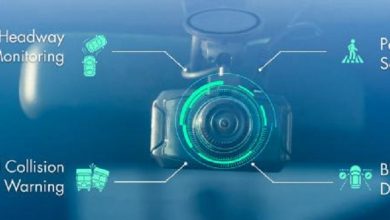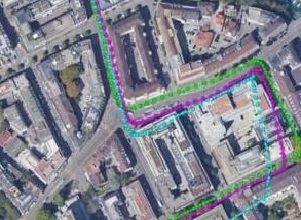Jim Weiss of ISO on "Big Data for UBI"
UBI: Inside the insurance industry’s great Big Data Experiment
Usage-based insurance (UBI) has earned its reputation as a win-win for drivers and carriers. Policyholders can benefit from higher levels of service and lower rates by improving theirdriving, while insurers can increase retention and minimize adverse selection by identifying lower-risk policyholders and awarding appropriate discounts.But such benefits merely scratch the surface of what’s possible for insurers that collect and use vehicle-generated data. Newer vehicles with self-driving capabilities reportedly produce up to 60 megabytes of content per second ? including data from vehicle engines, safety systems, entertainment and convenience features, cameras, and radars. That makes the data in today’s UBI programs seem like a drop in the bucket.
The Three Vs of Big Data
Much of the industry uses the “Three Vs” — volume, velocity, and variety — model to describe big data. And each of those “Vs” plays an integral role in UBI. Applying a big data mindset to telematics can help turn auto insurance’s great experiment into its greatest success story.
For UBI to emerge, the property/casualty industry must make good on its great big data experiment.
1. Volume
The literature suggests that advanced statistical methods require approximately 100,000 years of data to produce credible insights. That volume, while more a guideline than a commandment, can be useful when preparing insurance rating plans ? and particularly in helping those plans pass muster with insurance regulators.

Fortunately for UBI, statistical methods need not involve policyholders installing a telematics device in their vehicle for 100 millennium. One year spent observing 100,000 vehicles is an equally viable alternative. Achieving that volume can be pricey, however, the state-of-the-art devices (also known as dongles) that support many UBI programs cost about $100 per unit. Those devices, which plug into the on-board diagnostic ports located under most vehicle dashboards, also typically require additional monthly wireless costs to transmit the data. So insurers need to consider how to reduce the cost of data collection.
Reliable alternatives to the dongle are evolving. For example, smartphones have most of the requisite technology, such as accelerometers and cellular transmitters, to support UBI. One provider in the European Union offers a smartphone app that collects 200 miles’ worth of driving data for use in determining a discount. While such apps cut hardware costs by repurposing technology that a policyholder likely already possesses, they can also compromise data integrity, since drivers can turn off their phone during particularly risky trips. Operational complexities, such as providing a consistent experience across operating systems, may also exist.
A more viable long-term strategy might involve a hybrid approach that uses a simpler and less-expensive dongle to interact, such as using Bluetooth, with policyholder smartphones. Alternatively, some insurance companies are developing affinity partnerships with auto manufacturers to use factory-installed technology.
2. Velocity
Many carriers typically view UBI favorably when pricing and underwriting auto policies because telematics data measures driving behavior directly, often outperforming traditional rating variables such as age, gender, and credit score. However, unlike those rating variables, UBI typically requires the installation of technology, several months of behavioral monitoring, and a waiting period before the pricing or underwriting decision will apply.
That certainly isn’t the velocity one would expect from a big data environment. A better solution arguably would offer instantaneous benefits to policyholders who opt in to UBI programs.
Many insurers have taken steps to improve the speed and convenience of their UBI programs. Some carriers make provisional discounts available during a policyholder’s telematics observation period. In the future, others may use UBI to provide accident and breakdown coverage, which is perhaps the most immediately actionable use of telematics data, potentially benefiting both insurers and policyholders through loss minimization and speedier claims processing.
Policyholders may soon have the choice to opt in to an industrywide behavior-based scoring program. Such a program will use vehicle-generated data to produce a score that represents how safely drivers operate their vehicles, how safe their routes are, and how well they maintain their vehicles. Those portable scores would allow policyholders to dispense with the classic observation period when they shop for insurance, narrowing the convenience gap between UBI and a motor vehicle report or credit history score.
Of course, a portable score would likely require a centralized data repository. For UBI, candidates in the auto arena include original equipment manufacturers (OEMs), industry advisory organizations, consultants, and telematics service providers. Any clearinghouse would likely be responsible for ingesting data across various sources, homogenizing it, ensuring its quality, and complying with applicable regulation. ACORD recently laid the groundwork for some degree of industry standardization by publishing open data standards for UBI.
3. Variety
Telematics devices collect data quickly and often (at least once per journey, but more typically several times per minute), helping UBI live up to most people’s definition of big data. However, without global positioning system (GPS) coordinates, the variety of telematics data tends to be limited to a relatively small set of core data elements ? mileage; speed; select engine information, such as revolutions per minute; and acceleration, braking, and cornering, or what’s commonly known as the ABCs of risky behavior.
GPS data provides greater variety ? allowing actuaries to produce rich data sets that can yield deep insight into the driving experience. Insurers can derive a wealth of data from GPS coordinates. They can use GPS data to help assess the overall riskiness of a vehicle’s routes by associating the data with databases containing information about traffic generators, traffic density and composition, and weather and terrain. Doing so likely offers a significant advantage over traditional ratemaking that considers only vehicle garaging location. For example, a commuter who drives from the suburbs into the city for work may receive a much different rate than one who takes the exact same roads at precisely the same time every day ? but in the opposite direction. UBI helps allow the policyholder who makes the reverse commute to receive actuarially supported discounts.
GPS coordinates can also provide critical context for vehicle maneuvers. While it may be useful to know how many times a driver applies heavy pressure to a vehicle’s brakes, it may be even more useful to study what time of day the braking occurs and how fast the vehicle approaches the maneuver. Seeing driving behavior in context is characteristic of today’s advanced third-generation UBI models.
Even greater insights can come from associating GPS coordinates with road atlas databases to determine factors such as proximity to an intersection or how fast the vehicle was traveling relative to the posted speed limit. Proprietary algorithms can intuit road geometry. By employing such advanced models, carriers can derive thousands of multidimensional driving data variables to estimate the riskiness of driving patterns.
When applying a statistical approach, using a large variety of viable candidate variables for risky driving behavior increases the chances of deriving statistically significant insights. For example, when Verisk Analytics looked at multidimensional driving variables, the study found that claim costs for the riskiest 20 percent of operators were 10 times higher than those of the least risky 20 percent, even after considering the effects of a traditional rating plan.
Antoine de Saint-Exupéry observed that “perfection is achieved, not when there’s nothing more to add, but when there is nothing left to take away.” The actual big data challenge for insurers offering UBI may not be to access more data but to distill and communicate the insights they derive from that data into a seamless customer experience.
At the end of the day, the insurers that fail to do so may be casualties of the industry’s pursuit of perfection.
About the author
Jim Weiss, FCAS, MAAA, CPCU, is manager, Personal Automobile Actuarial, ISO Insurance Programs and Analytic Services, at Verisk Analytics. He has a strong inclination for R&D and involved in predictive modeling projects from inception through launch. He is a prize-winning author and frequent presenter; comfortable conversing with clients and regulators. He enjoys navigating dangerous waters of “big data” alongside multidisciplinary team of experts.



